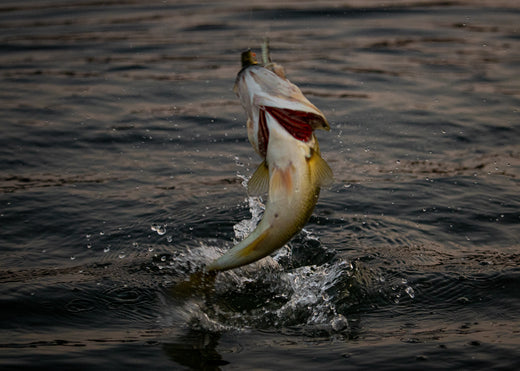For us, hot summers and local waters scream Bass on fly! An often-overlooked species on the fly rod, South Africa has some incredible bass fisheries scattered throughout the country, boasting sizable fish. Chucking a fly for bass can be very exciting, from the highly anticipated take to the acrobatic flight, our long hot African Summers are perfect for a little bit of Bass Fishing this season.
Without question, topwater fishing is the most exciting way of targeting bass on fly. Fishing double barrel poppers and similar patterns will keep any avid angler engaged, but like any technique, there are a couple tricks to make your fishing more effective and increase your conversion rate.

Tips and Trick:
Gear Selective – casting a chicken of a fly with a highly wind resistant foam head might leave you feeling like you’re fishing a GT fly on a 4wt. The first thing to look at are the size of the flies you’re going to be fishing. This may seem obvious, and although you can scale down on fly size to suit lighter rods, many patterns are just too big to be fished with 5wt rods. We would recommend looking at a 6wt or ideally a 7wt rod, for two reasons. A heavier rod has the backbone to cast big flies into the wind, and secondly, from a 7wt rod and up, you can look at more specialized fly lines that are designed to turn over larger patterns. They typically have a shorter, more aggressive head and are also tropical rated, which will suit the hot African summer conditions much better, especially when fishing from a boat. Few lines hold up to the hot deck of a boat unless tropical rated.
Punch it – now that you’ve got the right fly line, lets look at the leader construction. You can either construct a leader yourself or buy a tapered leader such as a 12lb Orvis Superstrong leader. We would cut back the front section of the leader one to three feet depending on the desired length, remember, the shorter the leader the easier it will turn over. Once you’ve shorted your leader, a nifty trick is to add a tiny power swivel. This will make changing tippet easier, prevent the large popper from twisting the leader, and will also aid in creating a more affective pop on the retrieve. If you’d prefer to taper your own leader, start with a 30lb butt section of Maxima Ultra Green, and taper to 20lb, 15lb and finally 12lb. The thinner the tippet, the shorter the section. By keeping the butt section longer, starting off with 3 feet, you’re creating a more aggressive taper, and much like the fly line, this will help immensely in turning over your fly.
Pop and drop – a mistake most anglers make when fishing a popper is on the retrieve. Once you’ve made your cast, fly landing inches away from the lily pads, give your fly a hard strip and leave it for 10 seconds. You’ll be amazed in how effective this extended pause can be on the first strip/pop. If nothing else, you’re giving the fish time to locate the fly.

Variety – structure is the name of the game when fishing for bass. Few fish are as structure orientated as a bass, however, something worth looking for is varying structure. For example, a line of reeds adjacent to a patch of lily pads will offer different kind of refuge for both your target species and their prey. Small tilapia and minnows will take refuge in dense structure, but varying types of structure in the same area can be a hot spot!
Now as far as flies go, we’ve talked about poppers and in this lineup, two immediately come to mind. The first is the double barrel popper from Flymen Fishing Company. This durable, soft foam construction popper has taken the bass fishing scene by storm and become popular for Bass, Pike, GT’s Peacock bass and a host of other species. We particularly like the fact that they come in a small and x-small variation, ideal for a 5wt rod. The second, bigger and beefier option are the Bass Poppers from Fullingmill. Both push water, make noise and most importantly – catch fish!
BUY Now:


